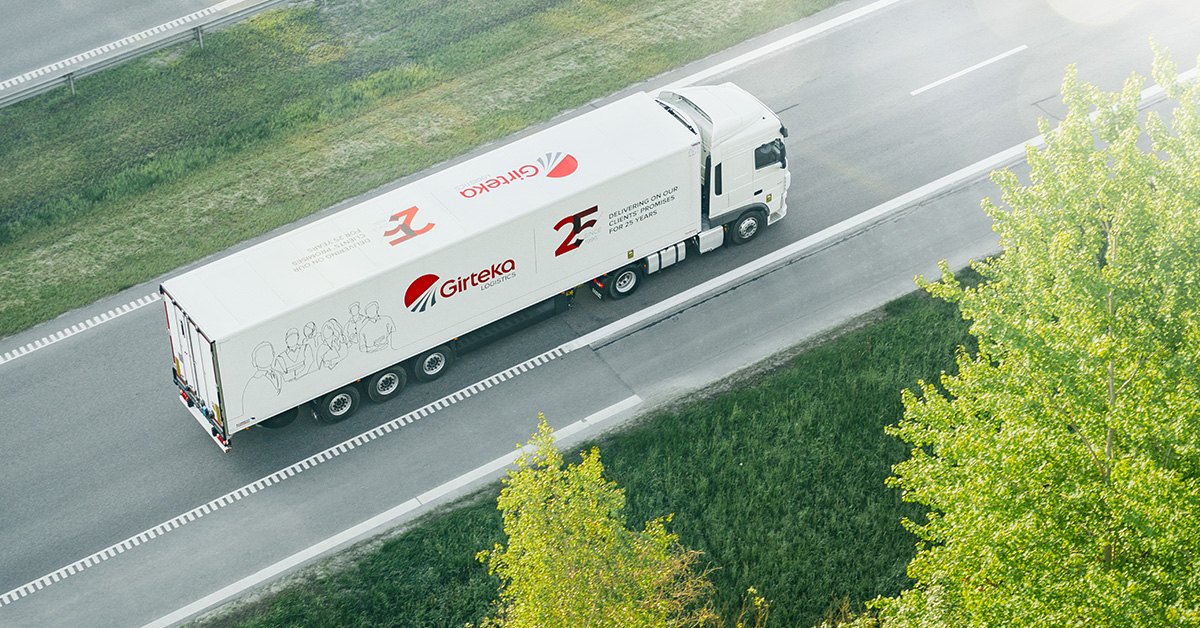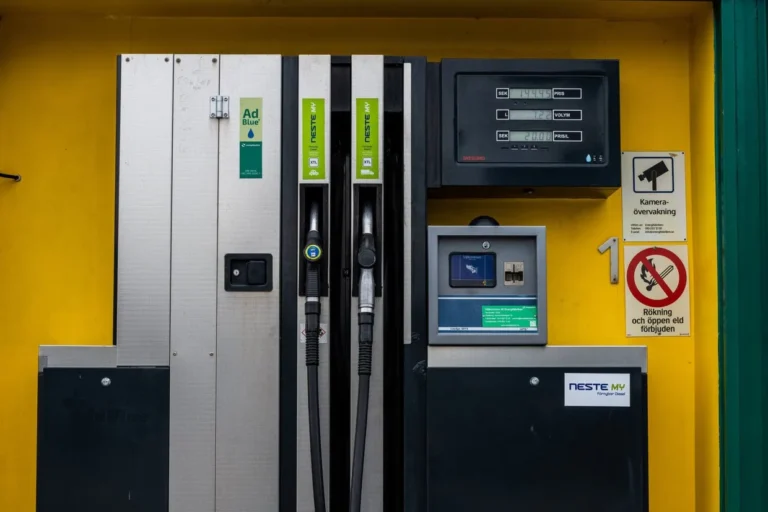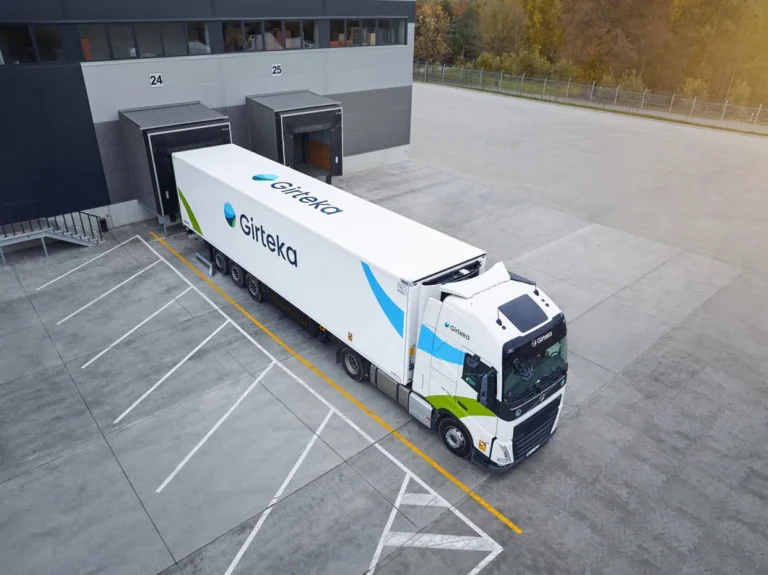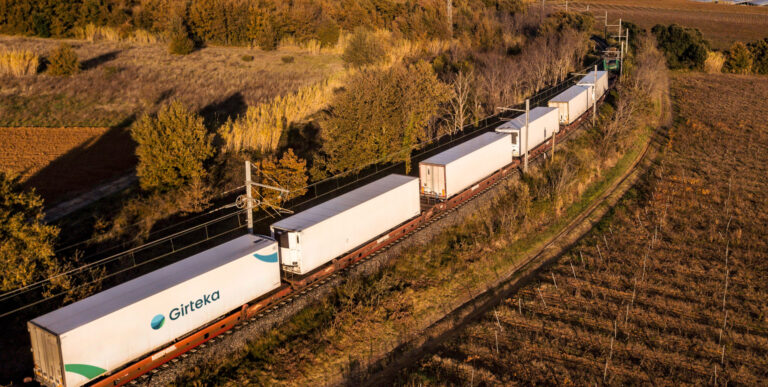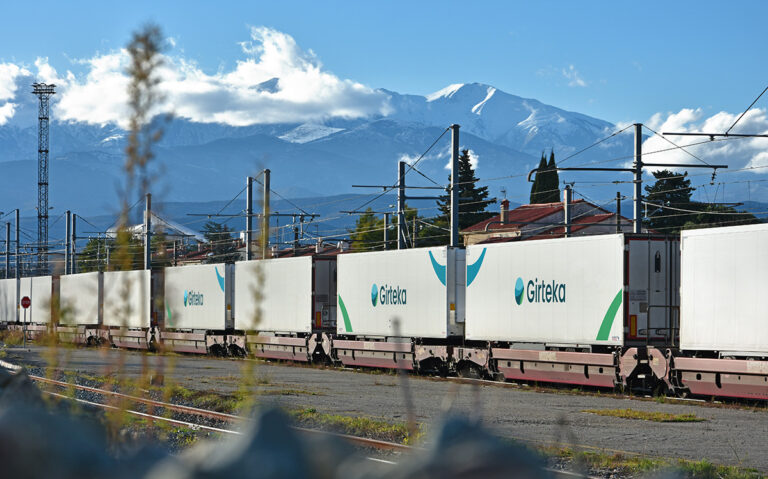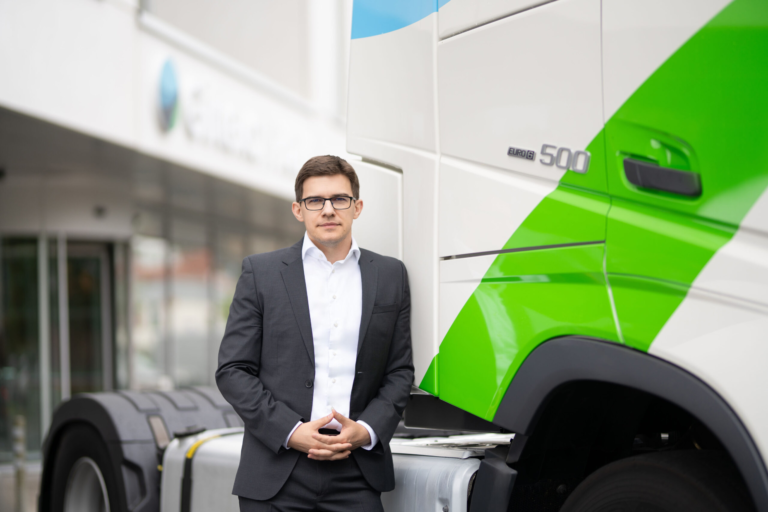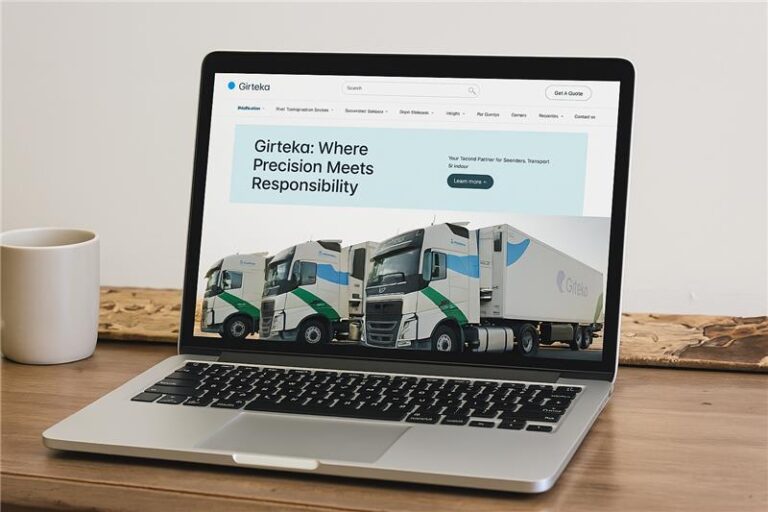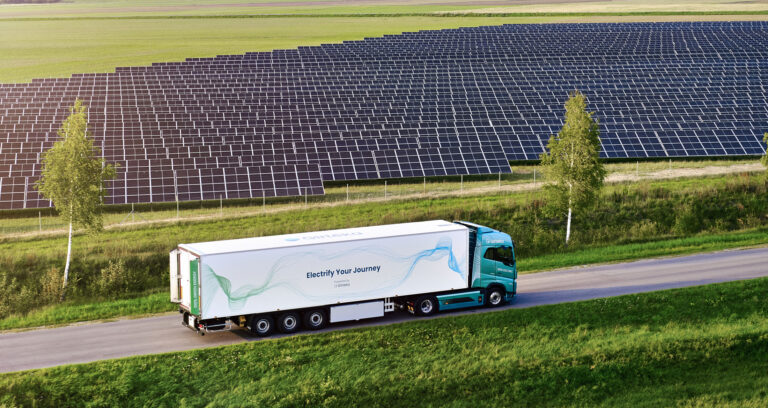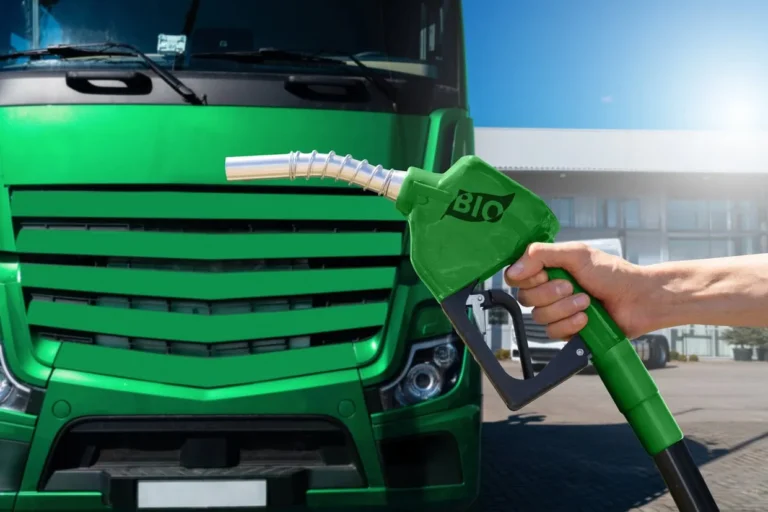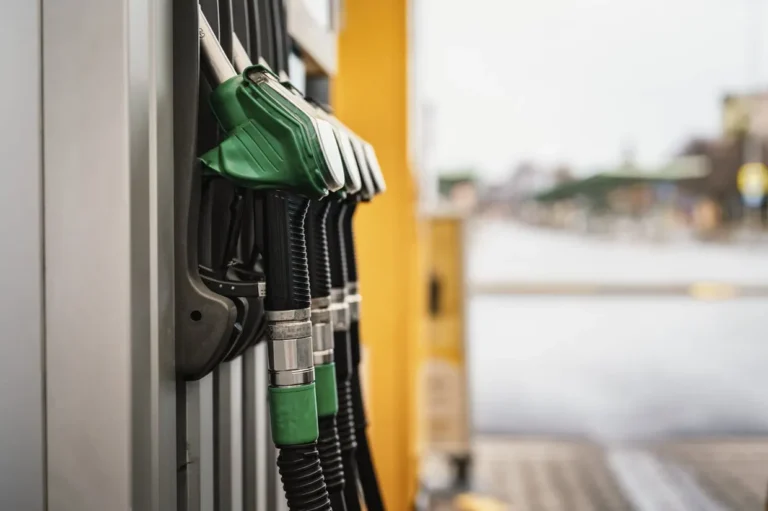While describing the small and fine details of an industry can be complicated, a basic approach could be is to look at where businesses within the trade are getting their revenue from and what are their operating expenses in order to provide services to their customers. Taking road freight transport as an example, the simple answer would be that revenue comes from cargo transportation, while operating costs come from carrying that cargo: beginning with the acquisition of a vehicle, the administrative expenses directly and indirectly associated with the operation of a truck. That is only the tip of the iceberg, as below the surface lies a fairly complex structure of costs that can have a lot of impact on road transport operators.
Fuel – the largest expense of them all
The outgoing funds cover various musts for cargo to move on the road, however, the majority of those funds go out to fuel the combination of a truck and a trailer traveling through borders.
A publication by the Joint Research Centre (JRC), the European Commission’s (EC) science and knowledge service, around 21.1% of General Transportation Costs (GTC) in the European Union (EU) are related to fuel. Fuel continues to be a particularly sensitive topic throughout the second half of 2021, as to this day, the price for the commodity continued to climb to record-breaking levels. The EC‘s weekly oil bulletin, tracking the average price of fuel and related products, such as automotive diesel, has showcased that the average price reached its peak in early-November 2021.
Nevertheless, the price continued to plateau at its peak levels, and per the latest bulletin, was €1,497 per 1,000 liters in the EU, and €1,524 per 1,000 liters in the Eurozone.
Carriers have little wiggle room in terms of how much fuel they can save. While Internal Combustion Engine technology has developed continuously, it struggled to reach a Brake Thermal Efficiency of more than 50%. The International Council on Clean Transportation (ICCT) researched the question of heavy-duty diesel engine efficiency and concluded that while diesel engines are the primary way to power commercial trucks, the engine is “subject to many design constraints, including durability, efficiency, and low emissions.” Testing two (Class 8 and Class 4-6) diesel engines that are compliant with the United States Environmental Protection Agency’s (EPA) emissions standards of 2010, the council concluded that the heavy-duty engine (Class 8) converted 39.1% of its fuel energy to brake power, while the medium-duty engine (Class 4-6) converted 29.9% of its fuel energy to brake power. A separate study, which focused on European standard engines, found that a typical tractor-trailer still has wiggle room to reduce its fuel consumption, as a baseline truck and trailer that was used for the study (a 2015 model, average fuel consumption of 33.1L/100km) could potentially use 43% on long-haul routes by 2030 if on average, the fuel consumption could be reduced by 3.6%. The engine used as a baseline was a Euro 6 example with a displacement of 12.8 liters, with a long-haul cycle-averaged BTE of 41.9%, and a peak BTE of 44.8%.
“Improvements in the engine peak brake thermal efficiency, going from 45% to 55%, resulting in an 18.1% reduction in fuel consumption over the Long Haul cycle,” said the ICCT’s report. Nevertheless, it also pointed out that while a total reduction of 43% is possible, “due to various technological, regulatory, or market barriers, it might not be possible for all technologies to achieve 100% market penetration.”
Another option to reduce road haulage fuel costs is to make processes efficient. Road cargo service should notice digital freight forwarding platforms that automate tasks, eliminate dead mileage, and make cargo delivery economical.
While the long-term prospects are exciting, the matter of the fact is that between November 2021 and January 2020, the average prices of fuel in the EU and the Eurozone in January 2020, prices rose 10% more in the EU or 11% in the Eurozone.
Thus, short-term solutions are sought after, as there is a current upwards pressure on costs from fuel.
Truck shortages
Fuel is not the only expense that‘s on the rise. Asset-related costs have also risen due to the unique situation that has been created by the pandemic, namely the supply issues of semiconductor chips, negatively affecting industries that are reliant on computer-aided solutions to power various items.
That includes trucks, which have developed leaps and bounds in the past decade or so and now include state-of-the-art safety and comfort technologies. Much like passenger vehicles, trucks are now equipped with modern infotainment screens on the dashboard, as well as have safety systems that are now becoming widely available across every means of transportation. Those systems and screens use semiconductor chips, of which there continues to be a shortage of, forcing manufacturers and truck buyers into a difficult situation: as the economical activity continues to improve, and consumers have increased their spending, there is an ever-growing demand for transport services, yet a difficulty to muster up the required vehicles in order to respond to that demand.
The situation is a complete switch up from the one seen in 2020, as truck sales dropped by 27% compared to 2019, per research by ING. Much like with regular vehicles, commercial-duty truck manufacturers did not anticipate such a sharp and immediate recovery, while supply chains were still moving in a start-stop motion due to outbreaks in manufacturing and shipping sites.
While the Dutch banking company anticipated recovery, still, it would be behind the levels of sales we have seen in 2019. Naturally, as the demand for assets rose, and with supply unable to keep up with the demand, the price shot up, as contracts were negotiated.
Thus, while the price of the truck is usually split into payments via the means of leasing, it still means that the monthly costs for a company have gone up, especially if they are looking to operate a young and efficient fleet. Even then, the ownership of a truck means that maintenance and insurance have to be paid and done. Vehicle repair and maintenance has also become more expensive, as not only the materials required for truck manufacturing/maintenance have gone up in value but also the shipping of said supplies, making it a costly ordeal for operators to properly maintain their trucks or repair them after an accident.
And although the increasing prices of new heavy-goods vehicles (HGV) provides an opportunity to shift more trucks to the used vehicle market, which has seen its own price hikes, for a road freight transport provider that wants to both refresh and grow its fleet, it has become an issue. Despite the price hikes, logistics companies continued to buy up new trucks, as they had nowhere to go: they needed the hardware, and customers’ cargo needed to be moved, which now became a multi-dimensional issue, as a driver shortage was only worsened by the pandemic.
Administrative costs
There were no two ways about it, as the European driver market was struggling even before COVID-19 lockdowns were enforced. Still, the pandemic and the brief pause in road transport activity meant that some drivers chose to leave the profession before their official retirement age, leaving the already depleted driver roster with even more gaps.
As a result, the competition between companies to keep their drivers working at their respective road freight transport providers ramped up, and one of the main ways of doing so was ramping up their income, in some cases, even several times throughout 2021. While ensuring that drivers, who have showcased their importance throughout the pandemic as they made certain that goods reached their intended destinations, including vital food and pharmaceutical supplies, are compensated properly is a thing to only boast about, it still meant that operating costs went up. Similarly, companies had to adapt to a new reality and provide drivers and office workers with personal protection equipment (PPE), which while was a must, was still an additional expense. The new reality also emphasized the importance of digitalization and companies’ ability to assure that the cargo will reach its end destination. Furthermore, while logistics is a business-to-business industry, behind the shipper’s logistics management stood people, who are also undergoing a stressful period, and providing real-time visibility could be the difference-maker in the current world. Not every company is prepared or able, due to their outdated software solutions, to provide such features to their customers, possibly losing out on business.
Yet digitalization is no cheap endeavor within a corporation, as many factors can only increase the cost of the process.
It is not something that could be done on a whim, as it requires a lot of preparedness beforehand before switching to a new digital system.
At the same time, ir provides a lot of benefits and efficiency improvements that could not be achieved with legacy processes, possibly becoming the only way to offset the growing costs in the short-term future.
A way out?
The situation is rough for Europe’s carriers, as the growing cost pressures can lead to a breaking point. Knowing that there are hundreds of thousands of small-to-medium enterprises in the Old Continent, a difficult winter could lead to fewer providers handling cargo transportation on the road. Still, despite the despair, there is a glimmer of hope, as companies can still turn their fortunes around and ensure efficient usage of their resources.
“Girteka Logistics beginning its digital transformation in early-2020, despite it not being completed fully, has helped us to mitigate some of that cost pressure we have faced in the past year,” commented Pavel Kveten, the Chief Operating Officer (COO) of the European Business Unit at Girteka Logistics.
“We realized that becoming more efficient in managing our assets and resources will allow us to take us to the next level in terms of the experience we can provide to our customers and that was one of the few reasons behind only accelerating our digitalization process,” continued the COO.
According to Kveten, while there is no band-aid solution for road transport companies to negate the ever-growing fuel prices, digitalization can provide ways to ease the pressure. “For example, as we partnered with Nexogen to utilize their Artificial Intelligence (AI) Planner, we managed to reduce the number of empty kilometers that our trucks drive by as much as 10%, which not only means that we are saving on fuel costs but we also avoid unnecessary emissions.” The AI Operator, another software solution developed by the partner, eases the workload on transport managers when planning routes for truck drivers and at the same time, picks out the most optimal route that is available between the loading and unloading destination. “The AI-based software allows us to fine-tune the small details that perhaps we could have missed previously. We need to realize that the AI Operator, for example, can provide us with the information on where to refuel for the cheapest price, if a truck is transiting throughout several countries – it will pick out the most economical option,” explained Kveten. “It also allows us to make sure that we provide the best customer experience possible, as the AI software and our colleagues work hand-in-hand, making sure that no mistakes slip through the cracks.”
The executive pointed out that being efficient with your assets was one of the ways to properly manage expenses in a difficult market situation. “While on the surface it might look like a carrier’s market, as prices for road transport have continued to rise and reached unprecedented levels, the rising operating costs have moved the market into a situation whereupon carriers had little choice but to look at their transport prices in order to stay afloat.”
